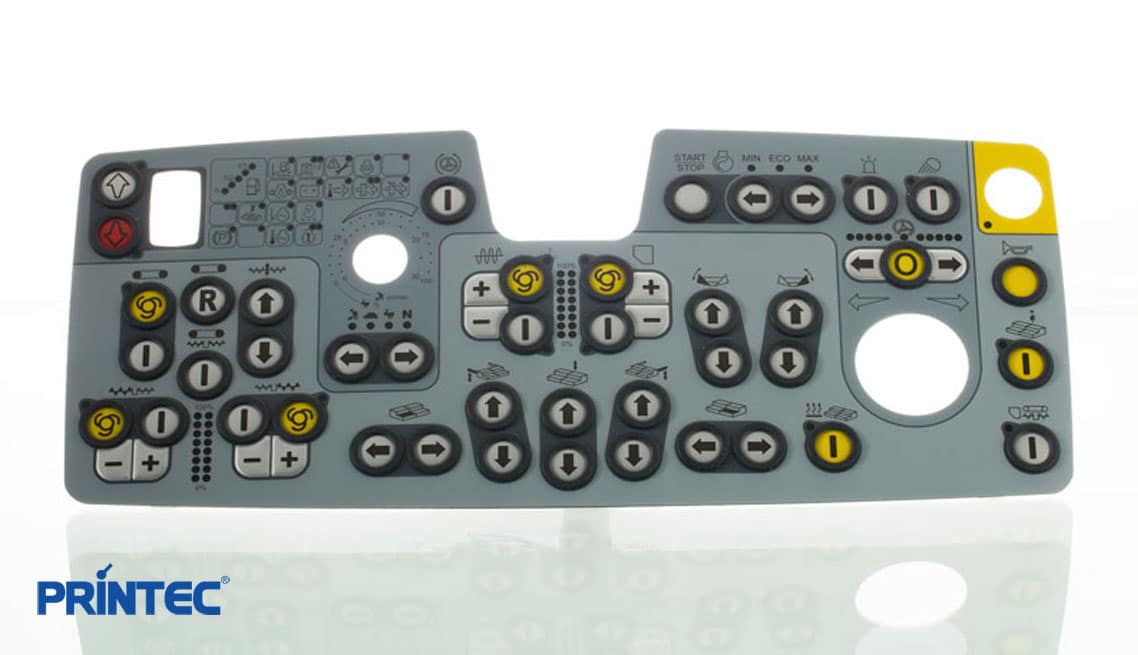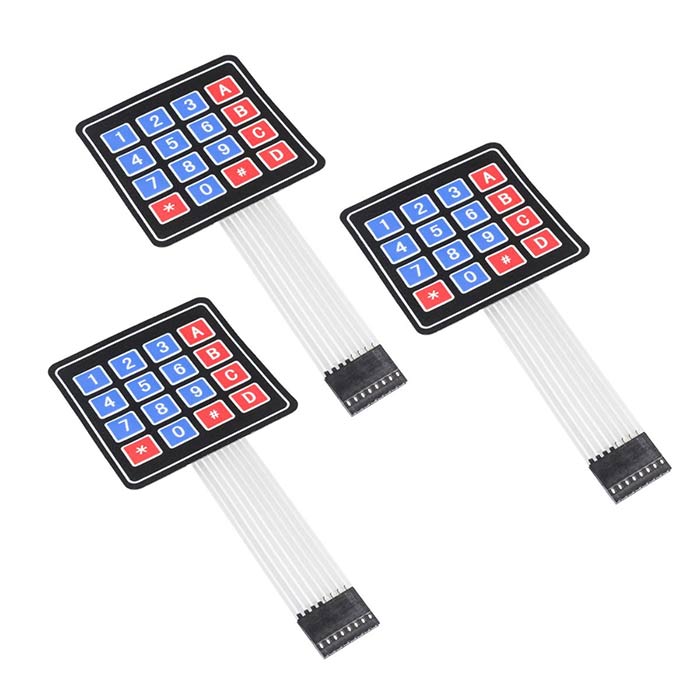Everything About Membrane Layer Switch: Recognizing Its Layout and Performance
When you consider the control user interfaces in modern gadgets, membrane switches usually enter your mind. These elements are much more than simply buttons; they mix design and performance seamlessly. Recognizing exactly how they function and what makes them reliable can alter your viewpoint on daily electronics. But, there are nuances to their design and efficiency that you could not recognize. Allow's explore what sets membrane switches apart from other control systems.
What Are Membrane Layer Buttons?

Membrane layer switches can likewise be customized regarding shape, dimension, and graphics, permitting manufacturers to develop special user interfaces customized to particular products. On the whole, membrane layer buttons play a considerable duty in enhancing customer experience throughout a vast selection of applications.
How Membrane Switches Work
When you press a trick on a membrane button, it turns on a straightforward yet reliable mechanism. membrane switch manufacturer. The leading layer, frequently made of flexible product, pushes down onto a conductive layer underneath it.
You'll observe that the responsive feedback varies based upon the switch design, supplying either a soft click or a more obvious feedback. When you release the trick, the membrane go back to its initial position, reopening the circuit and quiting the signal. This procedure happens virtually instantly, making certain a receptive individual experience.
Membrane buttons are preferred as a result of their longevity and resistance to dirt and wetness, making them excellent for different applications, from family devices to medical gadgets. Recognizing this operation aids you appreciate their widespread use.
Trick Parts of Membrane Layer Switches
Comprehending the crucial elements of membrane switches is fundamental for realizing their capability and style. At the core, you'll discover the graphic overlay, which provides the aesthetic interface for individuals. Under that, there's a spacer layer that separates the circuit layers, ensuring that they do not make get in touch with up until pushed. The circuit layer is where the magic takes place; it contains conductive traces that finish the circuit when you press the switch. One more important element is the adhesive support, enabling the switch to stick to surface areas safely. The safety layer shields against ecological elements and put on, prolonging the button's life-span. Each element plays a considerable duty in ensuring trustworthy performance and customer communication. By understanding these components, you'll obtain understanding into how membrane layer changes operate and their relevance in different applications.
Materials Made Use Of in Membrane Switch Over Design
The efficiency and sturdiness of membrane changes greatly depend upon the materials made use of in their design. You generally run into polyester and polycarbonate as main substratums because of their excellent stamina and adaptability. These materials stand up to scratches and chemicals, making them perfect for demanding environments.
The conductive layers frequently make use of silver or carbon, chosen for their integrity and conductivity. membrane switch manufacturer. Silver gives remarkable performance, while carbon is a cost-effective choice. For the overlay, you could consider a matte or shiny surface, depending on your aesthetic requirements and user experience
Make specific to choose adhesives that hold up against ecological variables like temperature and moisture. Selecting the appropriate materials will assure your membrane layer button stands the examination of time.
Design Factors To Consider for Membrane Layer Switches
While making membrane buttons, it's essential to consider various variables that affect their performance and customer experience. Start by concentrating on the layout and button dimension; ensure they're instinctive and very easy to browse. Take into consideration the responsive responses you wish to supply-- will individuals need a visible click or a softer touch? Additionally, consider the materials you'll use, as they'll impact durability and visual appeals.
Verify your design accommodates environmental elements, like dampness or temperature level variants, which might affect performance. By thoroughly thinking about these components, you'll produce a membrane button that improves functionality and fulfillment.
Applications of Membrane Switches
Membrane switches are versatile parts discovered in numerous applications, from industrial devices to customer electronic devices. You'll see their influence in devices that need long lasting interfaces and in gadgets that take advantage of sleek layouts. Understanding these applications assists you value the performance and usefulness of membrane switches in everyday innovation.
Industrial Devices Usage
When you're looking to enhance the performance of commercial equipment, membrane layer switches provide a trusted remedy that combines durability with straightforward style. These switches are ideal for extreme atmospheres, providing resistance to dust, dampness, and chemicals. Welcome membrane layer switches to simplify your procedures and enhance overall efficiency.
Consumer Electronic Devices Assimilation
In the domain name of customer electronic devices, membrane layer switches play a crucial function in improving user communication and device functionality. You'll discover them in devices like microwaves, push-button controls, and video gaming consoles, offering a smooth way membrane switch manufacturer to communicate with modern technology. Their smooth layout enables easy assimilation right into different products, making controls user-friendly and straightforward. With their capacity to include graphics and backlighting, you can appreciate a modern aesthetic that complements the tool's general look. Membrane layer switches also ensure sturdiness and resistance to dirt and wetness, expanding the life-span of your electronics. By selecting membrane layer switches, you enhance not just the functionality but also the design of your tools, making daily communications smooth and satisfying.
Advantages and Downsides of Membrane Layer Buttons
While membrane layer buttons use a range of advantages, they likewise come with some disadvantages that you should think about. One substantial benefit is their compact layout, making them ideal for space-constrained applications.

Nonetheless, there are disadvantages. Membrane layer buttons can have a much shorter life-span contrasted to mechanical switches, especially under hefty usage. They can likewise be less responsive, which could influence user responses during procedure. Additionally, if damaged, fixing them can be challenging and frequently needs Home Page complete substitute. Eventually, their level of sensitivity to extreme temperatures and environmental problems might restrict their performance in particular settings. Stabilizing these pros and cons will certainly help you identify if membrane layer buttons are the right suitable for your task.
Often Asked Concerns
The Length Of Time Do Membrane Changes Generally Last?
Membrane layer changes typically last between 5 to 10 years, relying on usage and environmental problems. You'll wish to examine elements like wear, exposure to wetness, and temperature changes to evaluate their long life properly.
Can Membrane Switches Be Custom-made for Specific Designs?
Yes, you can tailor membrane buttons to fit specific designs (membrane switch manufacturer). You'll have the freedom to select colors, shapes, and formats that match your job's requirements, guaranteeing they blend perfectly with your total aesthetic
What Is the Price Variety for Membrane Switch Production?
The expense array for membrane switch production commonly drops between $1 and $10 each, depending upon aspects like design intricacy, amount, and products. You can obtain quotes from producers to find the very best option.

Are Membrane Layer Changes Waterproof or Immune?
Membrane layer switches site web can be designed to be water-proof or immune, relying on products used and building and construction techniques. If you need them for damp atmospheres, ensure you specify those needs during the style process.
Exactly How Do Membrane Layer Switches Over Contrast to Standard Switches?
Membrane buttons are normally thinner and more flexible than conventional buttons, supplying a streamlined style. They're often less complicated to cleanse and incorporate, but might not provide the responsive feedback you're utilized to with mechanical options.
Final thought
